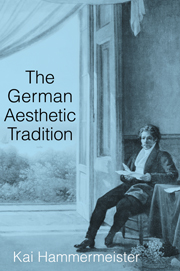2 - Kant
Published online by Cambridge University Press: 14 January 2010
Summary
If the single most influential text in the history of philosophical aesthetics were to be chosen, Immanuel Kant's (1724–1804) Kritik der Urteilskraft (Critique of judgment) of 1790 might very well turn out to be the one that a majority of philosophers would point to. Despite all the good reasons they can list for their justification, the selection of the third Critique is peculiar, because in the history of philosophical aesthetics (that properly only begins with precisely this publication), Kant is probably the one thinker who attributes the least significance to the work of art. And yet Kant must be regarded as the philosopher who at the same time claimed an importance for the aesthetic judgment that is on a par with those of a cognitive and moral nature. Kant, however, does not understand an aesthetic judgment to refer exclusively to art. In fact, for him most aesthetic judgments are not about art, but nature. They are about beauty in natural objects, as well as about our experience of the sublime.
The Critique of Judgment was written not as a theory of art and beauty but as an exploration of that faculty that is meant to guarantee the unity of reason, as Kant explains in his introduction. After having written the first two Critiques, he encountered the difficulty that the principles of pure reason and of practical reason are not identical and that, therefore, a gap had opened between theory and practice or freedom and nature.
- Type
- Chapter
- Information
- The German Aesthetic Tradition , pp. 21 - 41Publisher: Cambridge University PressPrint publication year: 2002



